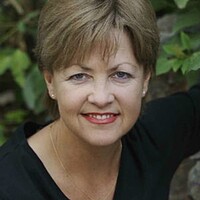Britain taps youth to determine latest social network favorites
Loading...
Here’s a super starting point for a conversation with your children about social media: NetAware, a brand-new set of reviews of kids’ top social media services from the National Society for the Prevention of Cruelty to Children (NSPCC). It’s not the first such resource for parents, but two things set it apart:
- These are kids’ own top social media picks. This isn’t adult guesswork. Because part of its mission is to “ensure the voices of children are heard in everything we do,” NSPCC consulted with 1,854 11-to-18-year-olds to find out the most popular social media services among their peers – social network sites, apps and games. NSPCC made sure the services were among the 100 most downloaded apps in iTunes and Google Play last October and comScore’s Top 50 services accessed by kids 6-14.
- The reviews are by parents, for parents. Britain’s NSPCC developed it with Mumsnet, one of the country’s largest parenting sites. Each of the 511 parents of 8-to-14-year-olds recruited for the project was asked to review 1-3 social media services by filling out a questionnaire NSPCC developed. They served as volunteers but were entered into a contest giving them a chance to win one of four donated prizes.
So far, there are 4 dozen reviews, and one way to start the conversation is to sit down with your kids and a laptop and load a page showing all 48 services’ icons in order of popularity. Tell them these are the top picks of British kids, so ask them if they think their friends would make the same picks and, if not, what they think are the Top 10 in their circles.
Then ask them what their own favorites are – their Top 5, maybe – see if they agree with the review provided for each one and if not, why not.
Ask them what they like about their top picks, if there’s anything they don’t like about them, what they do if something concerns them, whether they help other people out if someone’s bothering them in the service and if there are privacy settings they use to deal with annoying or hurtful content.
Get them to show you how they set the settings for themselves. If you use the same service – such as Google+, for example – you might even think out loud and optimize each account’s settings together.
The ideal age for this conversation is when kids first start using social media (including multiplayer games and apps). “To those who think kids don’t listen to their parents – EU Kids Online’s research shows that if parents do set age limits on their kids’ use of social network sites, kids will pay attention (especially when they’re younger),” wrote psychology professor and lead EU Kids Online researcher Sonia Livingstone in her blog post about this resource.
At the end of her post, she reinforces what most parents of social media users know – that both kids’ favorites and the social media themselves keep changing – so there’s nothing once-and-for-all about this resource. The value of NetAware is that it’s new. NSPCC – or someone – needs to keep hitting the “refresh button.”
The Christian Science Monitor has assembled a diverse group of the best family and parenting bloggers out there. Our contributing and guest bloggers are not employed or directed by the Monitor, and the views expressed are the bloggers' own, as is responsibility for the content of their blogs. Anne Collier blogs at NetFamilyNews, and you can find this original post with relevant related links here.






